|
“Tatar Shamail: Word and Image. Art of Calligraphy” was the name of the exhibition which opened on April 24 in the State Museum of Orient. The representatives of the Contemporary Museum of Calligraphy attended the show.
The exposition represents one of the kinds of the Arabic calligraphy – shamail which is an integral part of traditional culture of the Volga region.
The press conference was opened by Director General of the Museum of Orient, Mr. Alexander Sedov. In particular, he noted that the new exposition of about 70 artworks demonstrates joyful intricacy of Arabic ligature as well as original form of visual art which was widely spread among the Volga Tatars in the 2nd half of the 19th century. The exhibition displays the artworks from the funds of the State Museum of Visual Arts of the Republic of Tatarstan, works from private collections from the Fund of Marjani.
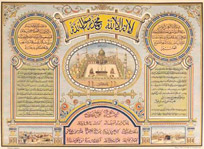 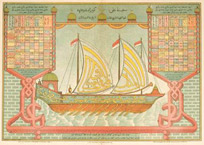
According to the member of the Union of Artists of the Republic of Tatarstan and Russia, PhD (art history) Mr. Rustem Shamsutov “Shamail is often compared to icon and popular print. Its depictive language, symbolic by nature, is varied. The texts from Koran, morality and profound symbolism of popular Islam interweaved into ornamental compositions; sites of pilgrimage destinations make the content of shamail. It was often hang over the door thus reminding of the beauty of divine disposal. In a traditional Tatar house shamail was used instead of paintings but unlike easel painting it didn’t actually serve for decoration but for protection and blessing of the dwelling”..
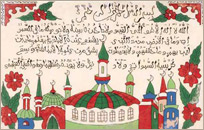
After the press conference Mr. Rustem Shamsutov as a guide made a brief excursion through the exposition.
The exhibition presents ancient shamails, executed on the back side of glass, printed shamails, widely spread in Kazan in the late XIX – early XX centuries, and also work of the professional artists who have turned to this traditional art at present time. The exposition kernel is made by printed shamails which represent aesthetic, spiritual and intellectual inquiries of the Moslems of Russia of the early XX-th century.
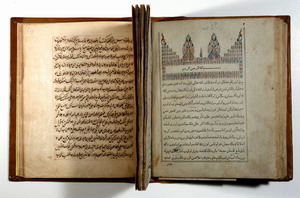
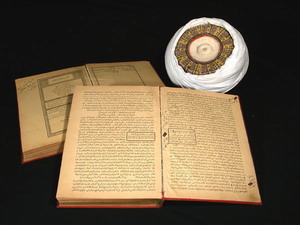
Modern artists interpret the theme of calligraphy in their own way. One addresses to ancient shamail, executed on glass, others find the modules to emulate in the Arabian and Persian hand-written tradition.
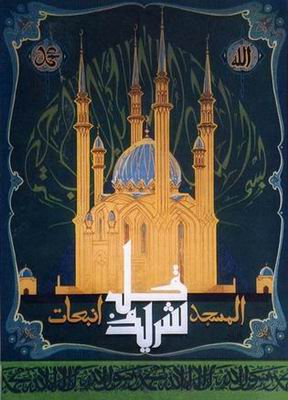
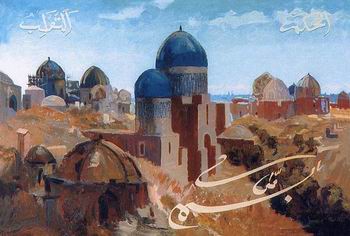
Among the works of modern masters there is Söyembikä by Najip Nakkash (Nazip Ismagilov), the member of the National Union of Calligraphers, articipant of the project “International exhibition of a calligraphy”.
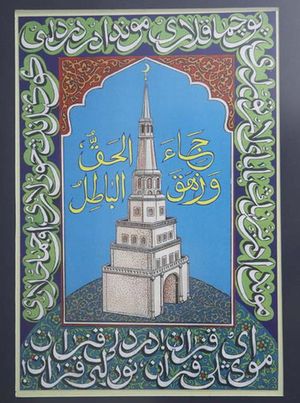
Shamail by Najip Nakkash
Many painters create abstract compositions in which modern graphic means develop the theme of sacred meaning of the divine letter. The graphic artist from Ufa Salavat Gilyazutdinov is such kind of an artist. For a series of works executed in the technique of manual moulding of paper, the artist is awarded with the diploma of the International Ural Triennial of Printed Graphics. In future, his original works can decorate the exhibition “Mystery of sign” which is initiated by the Contemporary Museum of Calligraphy in October this year.
Besides, representatives of the Modern museum of a calligraphy have agreed about cooperation with the director of G.Ibragimov Institute of language and literature and art of the Academy of Science of Tatarstan Kim Minnullin, the head of scientific programs of the Fund of Marjani Igor Alekseev and the PhD (art history) of the Scientific and Research Institute of the Russian Academy of Arts Tatyana Starodub.
Source: Contemporary Museum of Calligraphy |

